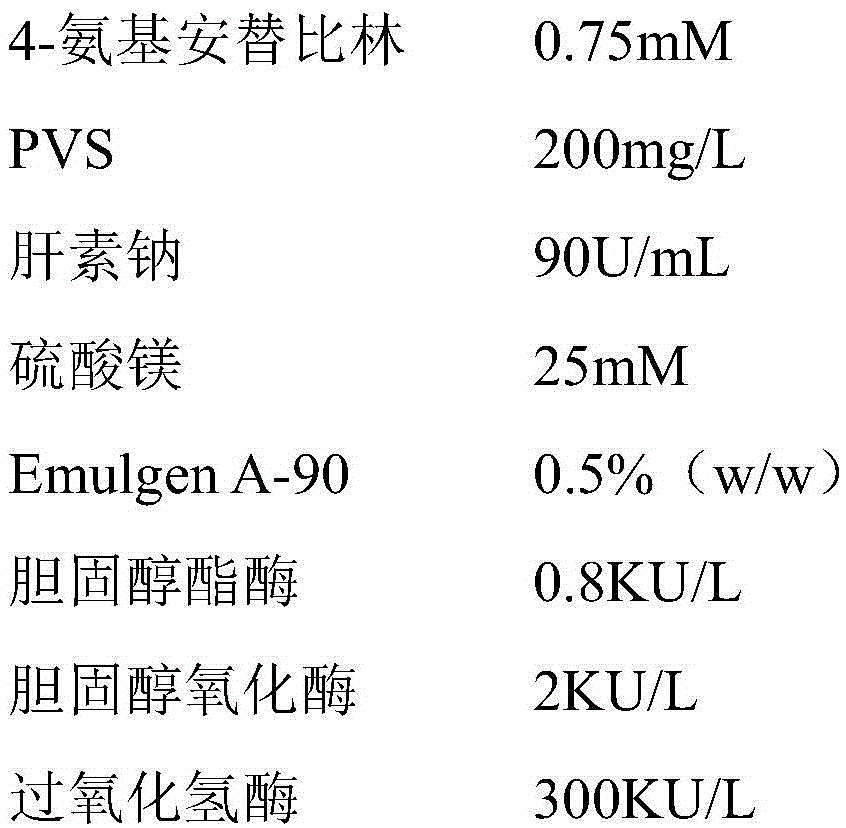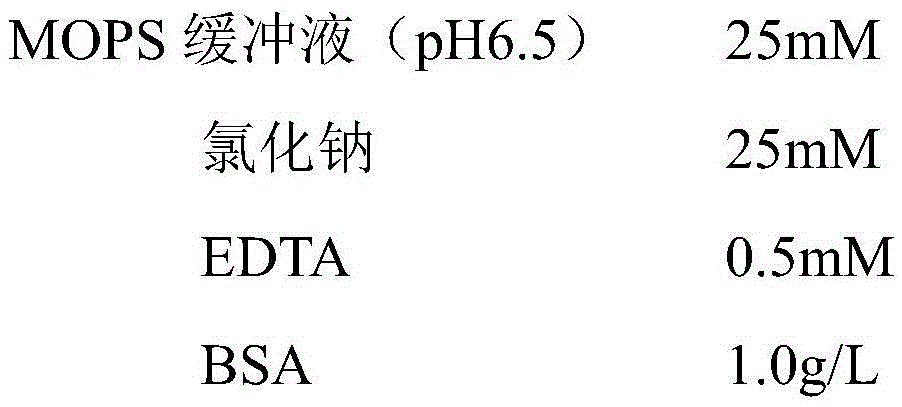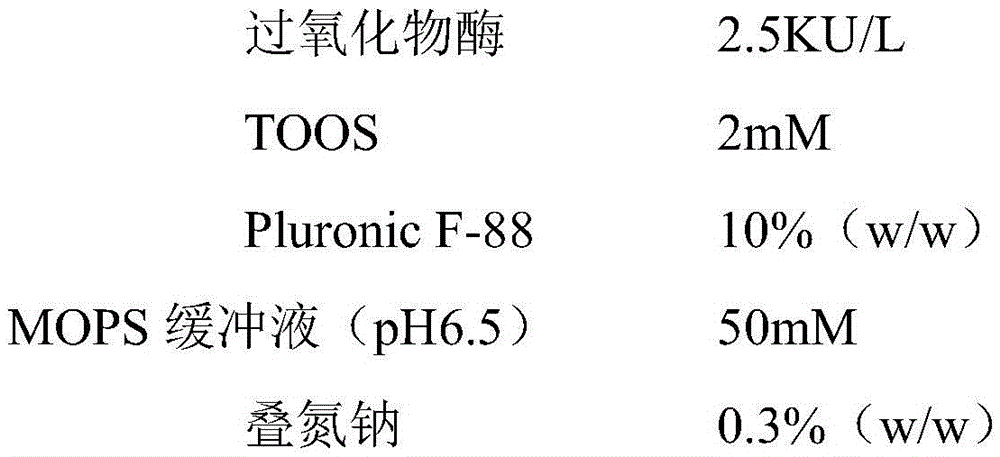Reagent, method and kit for measuring small-and-dense lipoprotein
A lipoprotein and reagent technology, applied in the field of biomedicine, can solve the problem of lack of detection methods for small and dense lipoproteins
- Summary
- Abstract
- Description
- Claims
- Application Information
AI Technical Summary
Problems solved by technology
Method used
Image
Examples
Embodiment 1
[0080] First reagent:
[0081] Add MOPS buffer, magnesium sulfate, sodium chloride, EDTA, BSA, PVS, sodium heparin, 4-aminoantipyrine and EmulgenA-90 into water, stir until completely dissolved, adjust the pH to 6.40-6.70, then add cholesterol esterase, cholesterol oxidase, and catalase at the following concentrations:
[0082]
[0083]
[0084] Among them, the molecular weight of PVS is 175,000.
[0085] Second reagent:
[0086] Add MOPS buffer, TOOS, sodium azide and Pluronic F-88 into water, stir until completely dissolved, adjust the pH to 6.40-6.70, then add peroxidase into the water and mix, and make the above substances reach the following concentrations:
[0087]
[0088] On the Hitachi 7180 automatic biochemical analyzer, 180 μL of the above-mentioned first reagent was reacted with 2.4 μL of clinical human serum samples for 5 minutes, and then 60 μL of the second reagent was added, and the two-point endpoint method was used at the primary / secondary 546nm / 70...
Embodiment 2
[0093] First reagent:
[0094] Add MOPS buffer, 4-aminoantipyrine, PEG6000, sodium heparin, magnesium sulfate, sodium chloride, EDTA, EmulgenA-90, EmulgenB-66 and BSA into water, stir until completely dissolved, and adjust the pH to 6.40-6.70 , then add cholesterol esterase, cholesterol oxidase and catalase, and make the above substances reach the following concentrations:
[0095]
[0096] Second reagent:
[0097]Mix MOPS buffer, TOOS, PluronicF-88 and sodium azide into water, stir until completely dissolved, adjust the pH to 6.40-6.70, then add peroxidase, and make the above substances reach the following concentrations:
[0098]
[0099] On the Hitachi 7180 automatic biochemical analyzer, 180 μL of the above-mentioned first reagent was reacted with 2.4 μL of clinical human serum samples for 5 minutes, and then 60 μL of the second reagent was added, and the two-point endpoint method was used at the primary / secondary 546nm / 700nm wavelength, and the reading point 16-34...
Embodiment 3
[0103] First reagent:
[0104] Add MOPS buffer, 4-aminoantipyrine, dextran sulfate 500, heparin sodium, magnesium sulfate, sodium chloride, EDTA, EmulgenA-90, EmulgenB-66 and BSA into water, stir until completely dissolved, and adjust the pH To 6.40-6.70, then add cholesterol esterase, cholesterol oxidase and catalase, and make the above substances reach the following concentration:
[0105]
[0106] Second reagent:
[0107] Put MOPS buffer, TOOS, PluronicF-88 and sodium azide into water, stir until completely dissolved, adjust the pH to 6.40-6.70, then add peroxidase, and make the above substances reach the following concentrations:
[0108]
[0109] On the Hitachi 7180 automatic biochemical analyzer, 180 μL of the above-mentioned first reagent was reacted with 2.4 μL of clinical human serum samples for 5 minutes, and then 60 μL of the second reagent was added, and the two-point endpoint method was used at the primary / secondary 546nm / 700nm wavelength, and the reading p...
PUM
 Login to View More
Login to View More Abstract
Description
Claims
Application Information
 Login to View More
Login to View More - R&D
- Intellectual Property
- Life Sciences
- Materials
- Tech Scout
- Unparalleled Data Quality
- Higher Quality Content
- 60% Fewer Hallucinations
Browse by: Latest US Patents, China's latest patents, Technical Efficacy Thesaurus, Application Domain, Technology Topic, Popular Technical Reports.
© 2025 PatSnap. All rights reserved.Legal|Privacy policy|Modern Slavery Act Transparency Statement|Sitemap|About US| Contact US: help@patsnap.com



